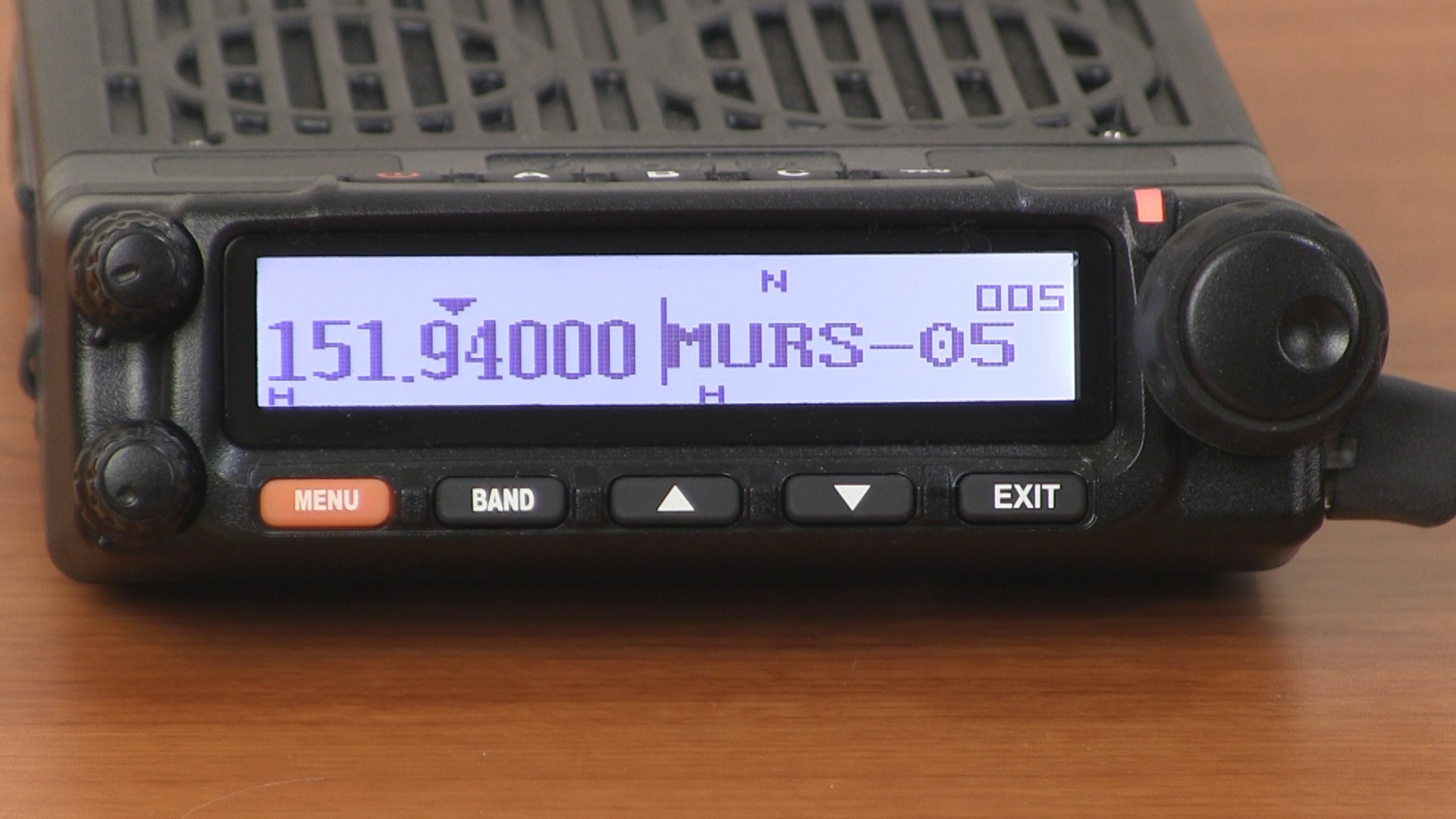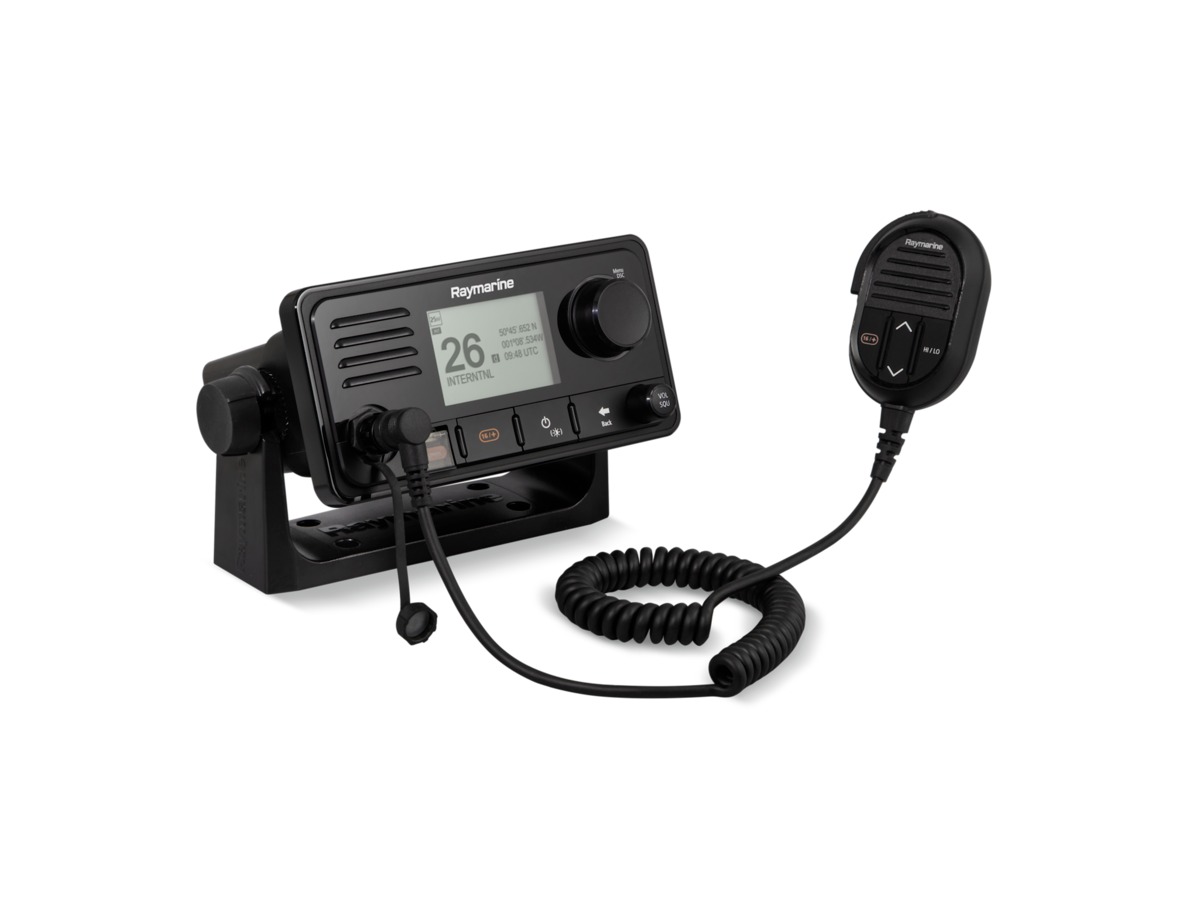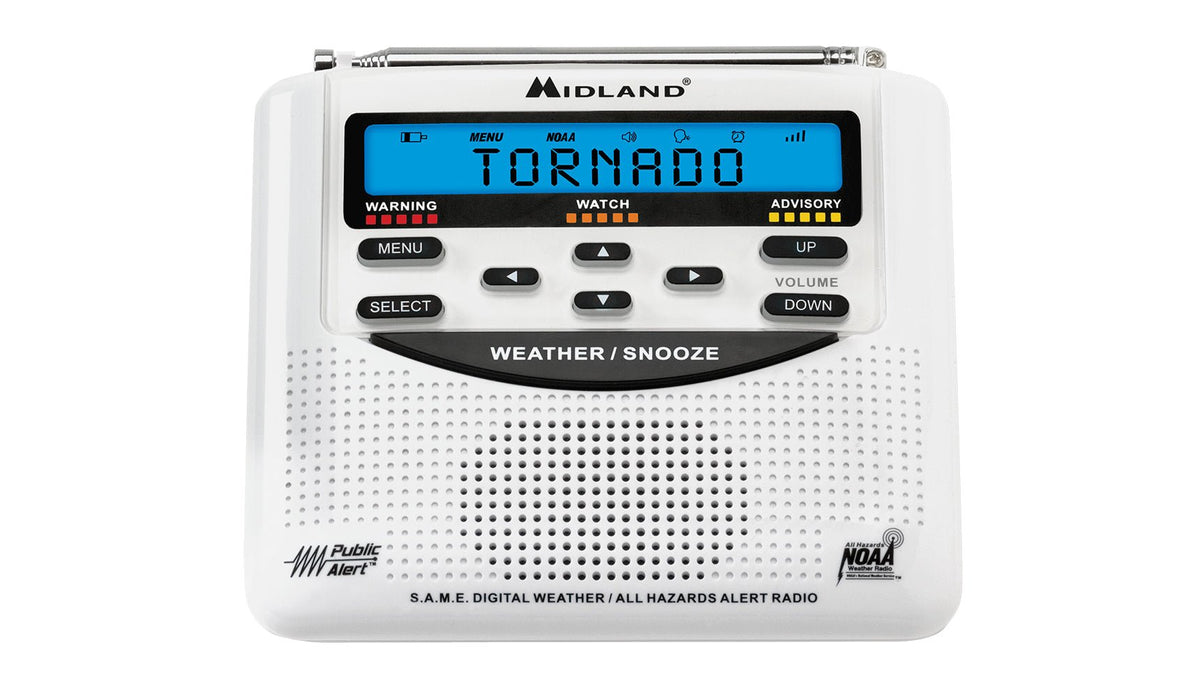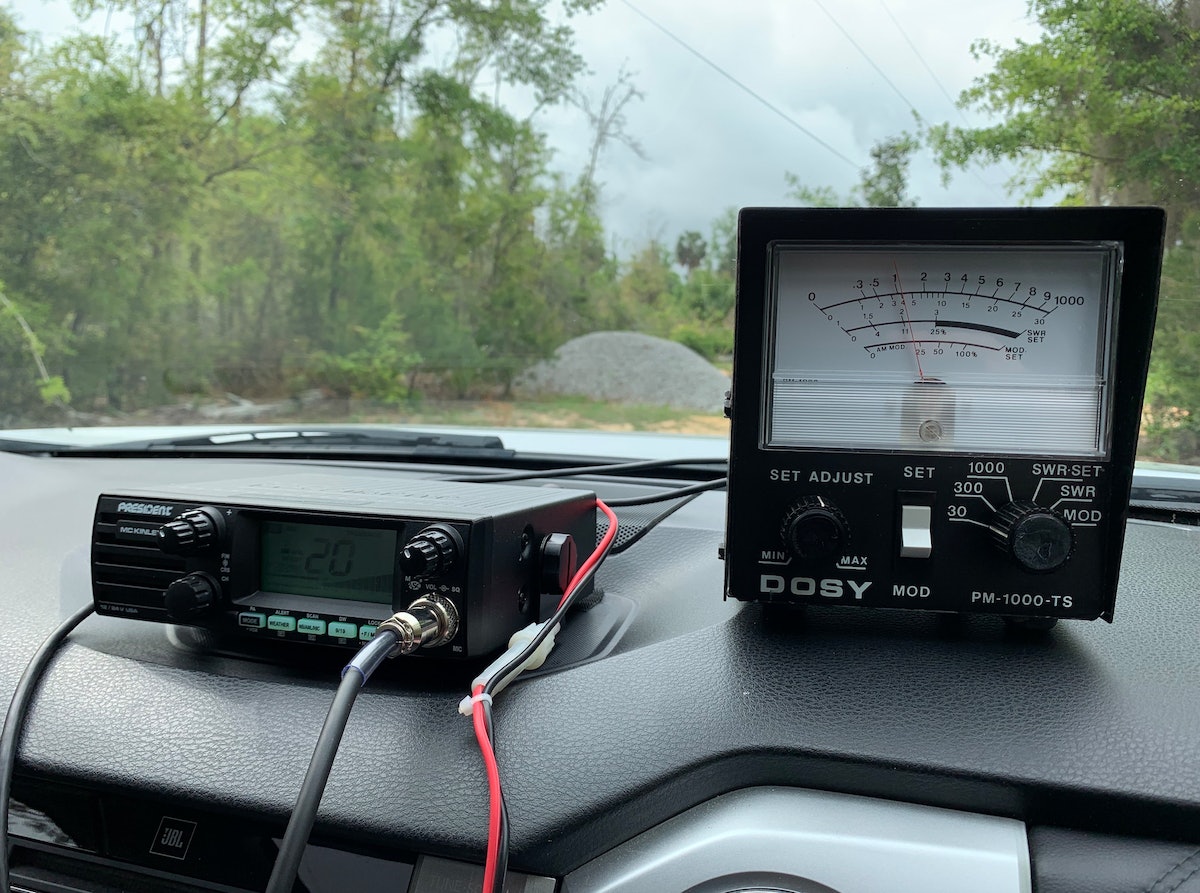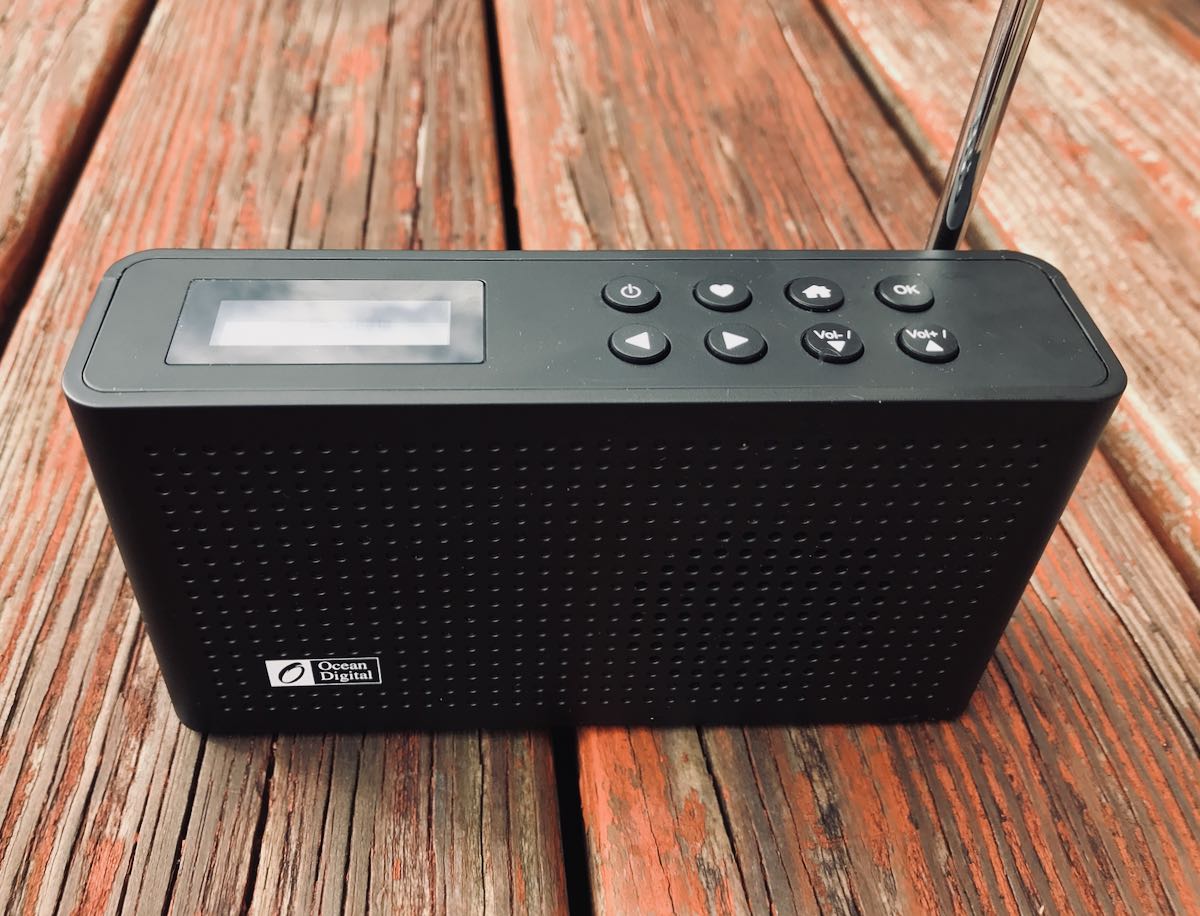Home>Devices & Equipment>Radio>What Is Shortwave Radio


Radio
What Is Shortwave Radio
Modified: January 22, 2024
Learn about shortwave radio and its benefits. Discover how shortwave radio can provide you with access to a wide variety of global radio stations and enhance your listening experience.
(Many of the links in this article redirect to a specific reviewed product. Your purchase of these products through affiliate links helps to generate commission for AudioLover.com, at no extra cost. Learn more)
Table of Contents
Introduction
Radio has played a significant role in shaping our world and connecting people across vast distances. It has been a primary source of information, entertainment, and communication for generations. One particular form of radio that has had a lasting impact is shortwave radio.
Shortwave radio refers to the use of high-frequency radio waves to transmit signals over long distances. Unlike AM/FM radio, which operates on lower frequencies and has a limited range, shortwave radio signals can travel thousands of miles, bouncing off the Earth’s ionosphere. This unique characteristic makes shortwave radio an invaluable tool for global communication.
Shortwave radio has a rich history dating back to the early 20th century. It gained popularity during World War II as a means of relaying news and information, particularly to troops stationed overseas. In the post-war era, shortwave radio played a crucial role in providing news, entertainment, and cultural programming to remote regions of the world.
Despite technological advancements and the rise of the internet, shortwave radio has managed to maintain its relevance in the digital age. It continues to serve as a lifeline for those in remote regions with limited access to other forms of communication. Additionally, shortwave radio enthusiasts appreciate its unique broadcasting capabilities, which allow them to tune into diverse content from around the world.
This article aims to provide a comprehensive overview of shortwave radio, delving into its definition, history, features, applications, frequencies, how it works, advantages, and disadvantages. Whether you’re an avid shortwave radio listener or just curious about this fascinating medium, join us as we explore the world of shortwave radio and the wonders it has to offer.
Definition of Shortwave Radio
Shortwave radio, also known as high-frequency (HF) radio, is a broadcasting and communication technology that utilizes shortwave frequencies to transmit signals over long distances. It operates in the frequency range of 3 to 30 megahertz (MHz), which is higher than those used by AM and FM radio stations.
What sets shortwave radio apart from other forms of radio communication is its ability to propagate through the Earth’s ionosphere. Shortwave signals can bounce off this layer of charged particles in the atmosphere, enabling them to travel across continents and even oceans. This characteristic allows for long-distance communication, making shortwave radio an essential tool for international broadcasting and communication.
Shortwave radio signals are not restricted by geographical boundaries or licensing regulations, which means that anyone with the appropriate equipment can transmit and receive shortwave signals. This inclusivity has made shortwave radio an important medium for reaching remote and underserved areas of the world.
Shortwave radio broadcasts can consist of various types of content, including news, music, cultural programs, weather updates, and emergency information. These broadcasts can be transmitted by a wide range of organizations, including national broadcasters, international broadcasters, religious groups, amateur radio operators, and government agencies.
Shortwave radios come in various forms, from portable handheld receivers to larger tabletop models. They typically feature frequency tuning knobs or digital displays, allowing listeners to tune in to different shortwave frequencies. Some radios also include additional features like single-sideband (SSB) reception, which allows for more efficient and clear communication over long distances.
Overall, shortwave radio is a versatile and accessible medium that enables long-distance communication and broadcasting. Its ability to overcome geographical barriers and reach listeners across the world makes it an invaluable tool for both information dissemination and entertainment.
History of Shortwave Radio
The history of shortwave radio dates back to the early 20th century when radio communication was rapidly evolving. In the 1920s, radio engineers and enthusiasts discovered that certain high-frequency radio waves could travel long distances by bouncing off the ionosphere. This breakthrough paved the way for the development of shortwave radio technology.
One of the earliest proponents of shortwave radio was Guglielmo Marconi, an Italian inventor who is widely known for his contributions to wireless telegraphy. In 1923, Marconi successfully transmitted a shortwave radio signal across the Atlantic Ocean, demonstrating the potential of this medium for long-distance communication.
During World War II, shortwave radio played a crucial role in military operations. It allowed commanders to communicate with troops stationed overseas and transmit vital information quickly and securely. Many nations established extensive shortwave broadcasting networks specifically for military purposes during this time.
After the war, shortwave radio continued to gain popularity as a means of international broadcasting. National governments and international broadcasters utilized shortwave frequencies to reach listeners in remote regions, particularly in developing countries with limited infrastructure.
In the 1960s and 1970s, shortwave radio became a powerful tool for spreading information and promoting democracy. Organizations like the Voice of America (VOA) and the British Broadcasting Corporation (BBC) used shortwave broadcasts to provide news and cultural programming to listeners behind the Iron Curtain.
In the digital age, shortwave radio has faced numerous challenges, including competition from other forms of media and the prevalence of the internet. However, it continues to have a dedicated following of enthusiasts who appreciate its unique features and the sense of adventure it offers. Shortwave radio remains a reliable means of communication during emergencies and natural disasters when other forms of communication may be disrupted.
Today, shortwave radio stations can be found across the globe, broadcasting a wide range of content in multiple languages. While the number of shortwave stations has decreased compared to its heyday, the medium continues to be cherished by listeners who enjoy its international programming, DXing (long-distance listening), and the thrill of capturing distant signals.
Overall, the history of shortwave radio showcases its evolution from a technological breakthrough to a vital tool for international communication and broadcasting. Its resilience and enduring popularity demonstrate the ongoing value and fascination with this unique form of radio transmission.
Features and Benefits of Shortwave Radio
Shortwave radio offers a range of features and benefits that make it a distinct and valuable medium for communication and broadcasting. Here are some notable features and benefits:
1. Long-Distance Communication:
Shortwave radio signals have the unique ability to travel long distances by bouncing off the Earth’s ionosphere. This allows for communication over thousands of miles, making shortwave radio an ideal medium for reaching remote areas and connecting people across continents.
2. Global Coverage:
Unlike FM and AM radio, which have limited geographical coverage, shortwave radio broadcasts can be received worldwide. This global reach makes shortwave radio an important tool for international broadcasting, enabling information and cultural exchange on a global scale.
3. Inclusive and Accessible:
Shortwave radio broadcasts are not restricted by licensing regulations or geographical boundaries. Anyone with a shortwave radio receiver can tune in to the broadcasts. This inclusivity allows for the dissemination of information to remote and underserved communities where other forms of communication might be limited.
4. Wide Range of Content:
Shortwave radio stations broadcast a diverse range of content, including news, music, cultural programs, weather updates, and educational shows. Listeners can tune in to local, national, and international stations, gaining insights and perspectives from around the world.
5. Resilience in Times of Crisis:
Shortwave radio has proven its reliability during emergencies and natural disasters when other forms of communication may be disrupted. It can provide critical information and updates to affected communities when power outages or infrastructure damage make traditional communication channels inaccessible.
6. Cost-Effective Solution:
Shortwave radio receivers are generally affordable and require minimal power to operate. This makes them a cost-effective solution, particularly for areas with limited resources. Additionally, the absence of subscription fees or data plans adds to the accessibility and affordability of shortwave radio.
7. Engaging and Adventurous:
Listening to shortwave radio can be an exciting and adventurous experience. DXing (long-distance listening) enthusiasts enjoy the challenge of capturing distant signals from around the world. It offers a sense of exploration and a connection to larger global events.
Overall, the features and benefits of shortwave radio make it a unique and valuable medium for communication, broadcasting, and information dissemination. Its global reach, inclusivity, and versatility continue to make it relevant in an increasingly interconnected world.
Applications of Shortwave Radio
Shortwave radio has a wide range of applications across various fields. From international broadcasting to emergency communication, here are some notable applications of shortwave radio:
1. International Broadcasting:
Shortwave radio serves as a powerful tool for international broadcasting, allowing nations and organizations to reach listeners around the world. National broadcasters like the BBC, Voice of America (VOA), and Radio China International use shortwave radio to disseminate news, cultural programs, and information to diverse audiences across continents.
2. Information Dissemination in Remote Areas:
Shortwave radio is crucial for reaching remote and underserved areas where other forms of communication may be limited or nonexistent. NGOs, relief organizations, and government agencies use shortwave radio to broadcast valuable information related to healthcare, education, agriculture, and emergency preparedness, ensuring that even the most isolated communities have access to important information.
3. Emergency Communication:
During emergencies and natural disasters, shortwave radio proves its resilience as a communication tool. It can provide essential information to affected communities when infrastructure damage disrupts traditional forms of communication. Emergency response teams, government agencies, and relief organizations rely on shortwave radio to disseminate vital updates, safety instructions, and emergency assistance information.
4. Amateur Radio Operations:
Shortwave radio is widely used by amateur radio operators, also known as “ham radio” operators, who engage in two-way communication for personal or experimentation purposes. It allows individuals to connect with others around the world, participate in contests, practice their technical skills, and provide valuable communication support during emergencies.
5. Global Diplomacy and Cross-Cultural Understanding:
Shortwave radio has played a significant role in promoting global diplomacy and fostering cross-cultural understanding. International broadcasters use shortwave radio to transmit information, news, and cultural programs that promote awareness and bridge gaps between different cultures and societies.
6. Travelers and Explorers:
For travelers and explorers, shortwave radio serves as a reliable source of information and entertainment, especially in remote or foreign locations. By tuning into shortwave broadcasts, travelers can stay updated on local news, weather conditions, and cultural events, enhancing their overall travel experience.
7. Education and Language Learning:
Shortwave radio offers educational opportunities, especially in regions where access to formal education is limited. Educational programs and language courses are broadcast over shortwave radio, providing valuable learning resources to individuals who may not have access to traditional classroom settings or internet connectivity.
These applications demonstrate the versatility and importance of shortwave radio in various sectors, connecting people, providing vital information, and bridging gaps across cultures and regions.
Shortwave Radio Frequencies
Shortwave radio operates in the high-frequency (HF) band, specifically in the frequency range of 3 to 30 megahertz (MHz). This range is divided into several frequency bands, each with its own characteristics and applications:
1. 120-meter Band (2.3 to 2.495 MHz):
This band is primarily used for government and maritime communications. It is often utilized in coastal areas for ship-to-shore communication and by regulatory agencies for various purposes.
2. 90-meter Band (3.2 to 3.4 MHz):
The 90-meter band is commonly used for long-range aviation communications, especially for aircraft flying over remote areas of oceans or polar regions. It provides a reliable means of communication for pilots, air traffic control, and aviation agencies.
3. 75-meter Band (3.9 to 4.0 MHz):
The 75-meter band is known for its use by amateur radio operators around the world. It offers excellent propagation characteristics for regional communication during both day and night, making it a popular choice among ham radio operators.
4. 60-meter Band (5.3 to 5.4 MHz):
The 60-meter band is widely allocated for government and military use. It is employed for national and international emergency communication, as well as for military operations in some regions.
5. 49-meter Band (5.9 to 6.2 MHz):
The 49-meter band is often crowded with international broadcasters from various countries. It provides good coverage during both day and night, making it suitable for transmitting news, cultural programs, and entertainment content to diverse audiences.
6. 41-meter Band (7.2 to 7.5 MHz):
The 41-meter band is used by international broadcasters, government agencies, and religious organizations. It offers reliable worldwide coverage and is well-known for its propagation characteristics, making it a popular choice for transmitting information and entertainment programming.
7. 31-meter Band (9.4 to 9.9 MHz):
The 31-meter band is heavily used by international broadcasters transmitting news, music, and cultural content to global audiences. It is known for its excellent propagation characteristics, allowing for relatively long-distance communication during both day and night.
8. 25-meter Band (11.3 to 11.8 MHz):
The 25-meter band is frequently utilized by international broadcasters transmitting in various languages. It offers good daylight coverage and is particularly suitable for long-distance propagation during the daytime hours.
These are just a few of the frequency bands used in shortwave radio communication. Other bands, such as the 60-meter band, 19-meter band, and 16-meter band, are also utilized by broadcasters and amateur radio operators for different purposes. The specific frequencies within each band may vary depending on international regulations and regional allocations.
By tuning into these frequency bands, shortwave radio enthusiasts and listeners can access a wide range of broadcasting stations from around the world, allowing for a diverse and global listening experience.
How Shortwave Radio Works
Shortwave radio works by utilizing high-frequency (HF) radio waves to propagate signals over long distances. Here’s an overview of how shortwave radio operates:
1. Signal Generation:
The process begins with the generation of an audio or data signal. This can be achieved through various means, such as a microphone for audio transmission or a computer for digital data transmission.
2. Modulation:
The generated signal is then modulated onto a carrier wave. Modulation involves changing the properties of the carrier wave, such as its amplitude (AM) or frequency (FM), to encode the information being transmitted onto the waveform. In the case of shortwave radio, the modulation technique used is typically amplitude modulation (AM).
3. Transmission:
The modulated signal is amplified and fed into an antenna. The antenna radiates the signal as electromagnetic waves into the surrounding space. The power of the transmitter and the design of the antenna system contribute to the transmission range and signal strength.
4. Ionospheric Reflection:
Once the shortwave signal is transmitted, it encounters the Earth’s ionosphere, a layer of charged particles in the upper atmosphere. The ionosphere acts as a virtual mirror for the shortwave signals, reflecting and refracting them back towards the Earth’s surface.
5. Skywave Propagation:
As the shortwave signals interact with the ionosphere, they can be refracted or reflected back to the Earth’s surface, allowing for long-distance propagation. This phenomenon, known as skywave propagation, enables shortwave radio signals to travel beyond the line of sight and reach distant locations. The frequency and angle of incidence determine whether the signal will be refracted or reflected back to Earth.
6. Reception:
Shortwave radio receivers, equipped with an antenna and a tuner, capture the shortwave signals from the atmosphere. The tuner allows the listener to select a specific frequency or bandwidth to tune into a particular station or transmission. The receiver demodulates and amplifies the received signal, enabling the conversion back to an audible or visible form for the listener.
7. Noise and Interference:
Shortwave radio reception can be subject to various forms of noise and signal interference. Atmospheric noise, electrical equipment, and competing radio signals can affect the clarity and quality of reception. Listeners often employ techniques like directional antennas and noise reduction filters to enhance the signal quality.
With their ability to propagate over long distances, shortwave radio signals provide a means of communication and broadcasting that extends beyond traditional line-of-sight limitations. The interaction between the transmitted signal and the Earth’s ionosphere enables worldwide coverage and the reception of a diverse range of content from around the globe.
Advantages and Disadvantages of Shortwave Radio
Shortwave radio offers several advantages and disadvantages as a communication and broadcasting medium. Here’s a closer look at these factors:
Advantages:
1. Long-Distance Coverage:
One of the key advantages of shortwave radio is its ability to provide long-distance coverage. Shortwave signals can travel thousands of miles, allowing for global communication and broadcasting. This makes shortwave radio a valuable tool for reaching remote areas and connecting people across continents.
2. Global Reach:
Shortwave radio broadcasts can be received worldwide, expanding the reach of information and cultural programming. Listeners can tune into international broadcasters, gaining insights and perspectives from different countries and cultures.
3. Accessibility:
Shortwave radio broadcasts are accessible to anyone with a shortwave receiver, as they are not restricted by licensing or subscription fees. This inclusivity allows for information dissemination to remote and underserved communities with limited infrastructure or access to the internet.
4. Resilience:
Shortwave radio has proven to be a resilient means of communication during emergencies and natural disasters. It can provide vital information and updates when other forms of communication are disrupted due to power outages or infrastructure damage.
5. Cost-Effective:
Shortwave radio receivers are generally affordable, making it an accessible medium for communication and entertainment. Once purchased, shortwave radio does not require ongoing subscription fees or data plans, making it a cost-effective solution.
Disadvantages:
1. Signal Interference:
Shortwave radio reception can be prone to signal interference from various sources, such as atmospheric noise, electrical equipment, or competing radio signals. This interference can impact the clarity and quality of reception.
2. Limited Bandwidth:
Shortwave radio operates within a limited frequency range, which can result in a limited number of available channels and less bandwidth for high-quality audio or data transmission. This can lead to reduced audio fidelity or slower data transfer rates compared to other communication technologies.
3. Propagation Challenges:
The characteristics of shortwave radio propagation can vary depending on atmospheric conditions, time of day, and geographic location. Signal strength can be affected by factors like solar activity, weather disturbances, and ionospheric conditions, resulting in fluctuations in reception quality.
4. Declining Availability of Stations:
Over the years, the number of shortwave radio stations has declined due to changes in broadcasting trends and the rise of alternative media platforms. This decrease in available stations can limit the variety of programming and content accessible to shortwave radio listeners.
5. Limited Local Coverage:
Shortwave radio signals, due to their long-distance propagation, generally lack localized coverage. This means that for local news, weather updates, or community-specific information, other forms of radio or communication may be more suitable.
While shortwave radio has its challenges, its unique features and global reach continue to make it a relevant and valuable communication and broadcasting medium in an interconnected world.
Popular Shortwave Radio Stations
Shortwave radio offers a diverse range of broadcasting stations from across the globe. Here are some popular shortwave radio stations known for their wide-ranging content and international reach:
1. BBC World Service:
The British Broadcasting Corporation (BBC) World Service is one of the most renowned international broadcasters. It provides news, culture, and educational programs in multiple languages. The BBC’s shortwave broadcasts cover a wide range of topics and are highly respected for their journalistic integrity and global perspective.
2. Voice of America (VOA):
The Voice of America (VOA) is a U.S. government-funded international broadcaster that delivers news and information in various languages. VOA provides comprehensive coverage of global events and has a reputation for impartial reporting and in-depth analysis.
3. Radio France Internationale (RFI):
Radio France Internationale (RFI) broadcasts news, current affairs, culture, and French-language programs to a global audience. RFI offers diverse content in multiple languages, covering national and international news as well as cultural and educational topics.
4. China Radio International (CRI):
China Radio International (CRI), the official international broadcaster of China, broadcasts news, cultural programs, and music in multiple languages. CRI offers insights into Chinese culture, society, and global perspectives from a Chinese standpoint.
5. Radio Havana Cuba:
Radio Havana Cuba is the international broadcasting service of Cuba. It provides news, analysis, and cultural programs in multiple languages, presenting a Cuban perspective on global events and issues.
6. Deutsche Welle (DW):
Deutsche Welle (DW) is Germany’s international broadcaster, offering news, culture, and information in multiple languages. DW covers global news, German cultural topics, and provides insights into European perspectives and German society.
7. Radio Australia:
Radio Australia, part of the Australian Broadcasting Corporation (ABC), offers a range of programming including news, current affairs, culture, and entertainment. It provides a platform for sharing Australia’s perspectives and stories with a global audience.
8. Radio Netherlands Worldwide (RNW):
Radio Netherlands Worldwide (RNW) broadcasts news, culture, and feature programs in multiple languages. RNW offers insights into Dutch culture, innovative technologies, and global developments.
These are just a few examples of popular shortwave radio stations that provide diverse content and reach a global audience. Additionally, there are numerous other national broadcasters, religious stations, and amateur radio programs that contribute to the wide range of programming available on the shortwave spectrum.
Conclusion
Shortwave radio, with its ability to transmit signals over long distances, has played a significant role in global communication and broadcasting. Throughout its history, shortwave radio has provided a means of information dissemination, cultural exchange, and connectivity across continents.
From the early pioneers of shortwave radio to the modern-day broadcasters, this medium has proven its resilience and relevance. Despite the rise of the internet and other advanced communication technologies, shortwave radio continues to serve as a lifeline for remote communities, a source of diverse programming, and a tool for emergency communication.
The features and benefits of shortwave radio, such as its long-distance coverage, global reach, inclusivity, and cost-effectiveness, make it an invaluable medium for international broadcasting, reaching underserved areas, and fostering cross-cultural understanding.
While shortwave radio does come with its challenges, including signal interference and limited bandwidth, its unique ability to propagate signals globally and provide reliable communication during emergencies outweighs these limitations.
As technology continues to evolve, shortwave radio enthusiasts and listeners can still experience the excitement and adventure of tuning into distant stations and exploring content from around the world. Shortwave radio represents a bridge between countries, cultures, and individuals, connecting us in an increasingly interconnected world.
In conclusion, shortwave radio’s rich history, global coverage, and enduring relevance make it a fascinating medium that continues to captivate and facilitate communication for people worldwide.


